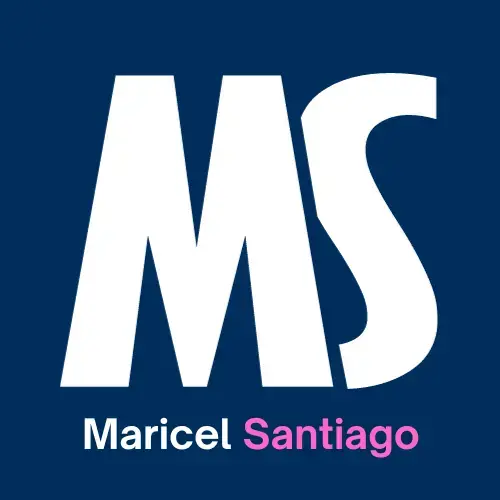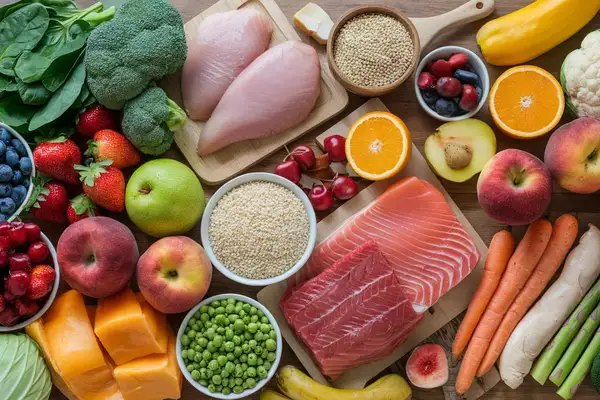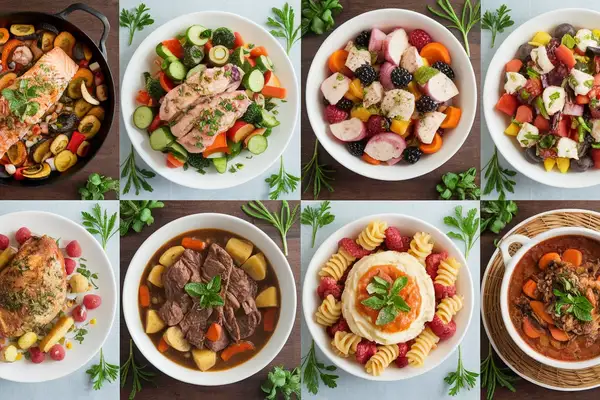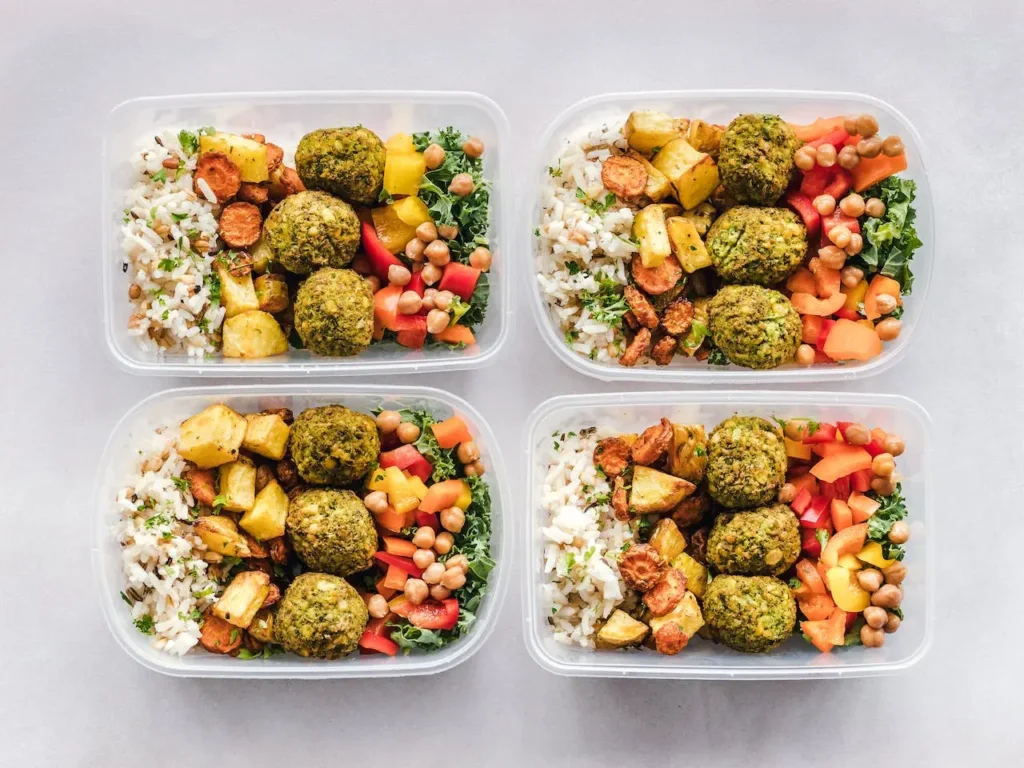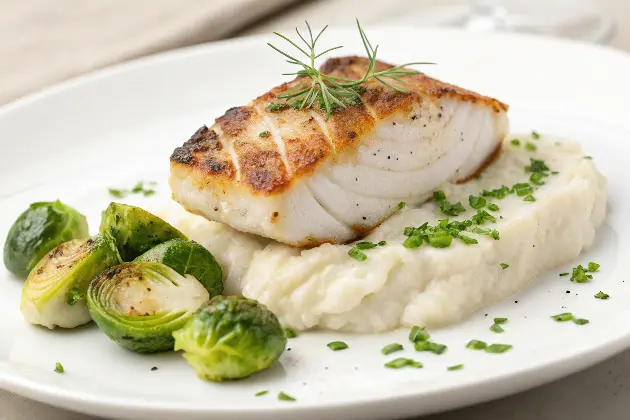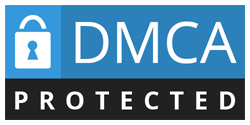7 Day Low-Sodium Diet Meal Plan for high Blood Pressure
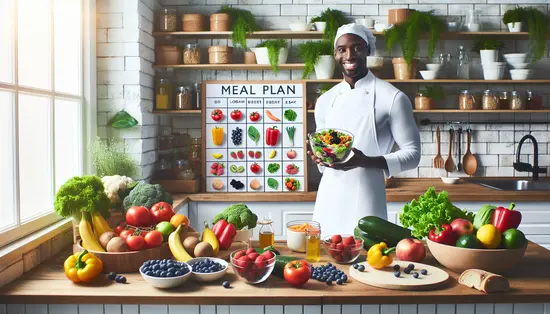
This post may contain affiliate links, meaning I may earn a commission if you make a purchase, at no extra cost to you. I only recommend products I trust. Thank you for your support.
Navigating a low-sodium lifestyle can be a challenge, with health recommendations varying from one authority to another.
For individuals managing conditions like kidney disease, high blood pressure, and heart failure, adhering to a 7 day low-sodium diet meal plan can be a critical step towards better health.
The American Heart Association suggests limiting sodium intake to no more than 2,300 milligrams per day, with an ideal target of less than 1,500 milligrams for most adults.
This dietary adjustment has shown promising results in reducing blood pressure even among those on medication.
This article delves into crafting a feasible and enriching 7 day low-sodium diet meal plan that not only adheres to these guidelines but also promises delicious, healthy low sodium meals to enjoy.
Whether you’re looking for a healthy low sodium meal plan or exploring low sodium meals, this article is tailored to a variety of low sodium dietary needs and preferences.
7 Day Low-Sodium Diet Meal Plan (Low Sodium Diet Menu)
This 7 day low sodium diet emphasizes whole low sodium foods and low sodium meals with the sodium content specified for each meal ensuring you can maintain a low-sodium diet.
Below is a detailed 7 day low-sodium diet meal plan designed to keep sodium content low while providing balanced nutrition.
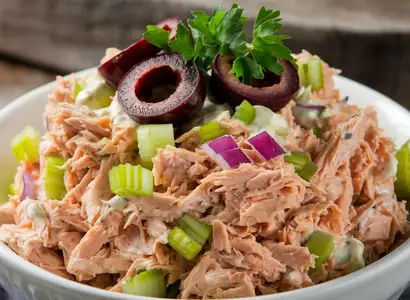
Day 1
The first day of this low sodium diet menu contains approximately 1005 mg of sodium helping you manage your sodium intake effectively while enjoying delicious and nutritious low sodium meals.
Breakfast:
- Shredded Wheat Cereal: Serve 1 cup of shredded wheat cereal with 1 cup of low-fat milk. (1 cup shredded wheat, 1 cup low-fat milk)
- Banana and Nuts: Enjoy a half medium banana with a tablespoon of unsalted nuts. (1/2 banana, 1 tbsp unsalted nuts)
Lunch:
- Tuna Salad: Mix 1/2 cup of fresh tuna with low-sodium ingredients, such as diced vegetables and a small amount of olive oil. (1/2 cup tuna, diced vegetables, olive oil)
- Salad Greens and Triscuits: Toss 2 cups of shredded romaine lettuce with 1/2 cup tomato slices, and serve with 6 low-sodium Triscuits. (2 cups romaine lettuce, 1/2 cup tomato, 6 Triscuits)
Dinner:
- Roasted Chicken and Vegetables: Roast 3 oz of chicken breast with green beans and a small baked sweet potato. (3 oz chicken breast, 1 cup green beans, 1 small sweet potato)
Snacks:
- Greek Yogurt: Enjoy 6 oz of Greek yogurt. (6 oz Greek yogurt)
- Popcorn: Have 3 cups of air-popped popcorn with 0.5 tbsp unsalted butter. (3 cups popcorn, 0.5 tbsp unsalted butter)
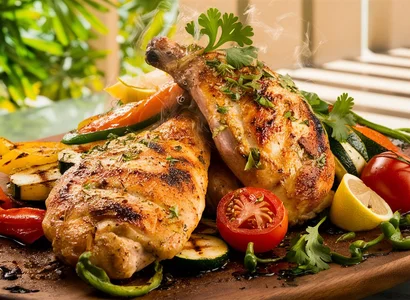
Day 2
The second day of this low sodium diet menu totals approximately 1040 mg of sodium, effectively balancing flavor and nutrition within the recommended low-sodium guidelines.
Breakfast:
- Oatmeal and Toppings: Make a warm bowl of oatmeal and mix in 2 tablespoons of raisins and 1 tablespoon of unsalted walnuts. Serve with 1 cup of low-fat milk. (1 bowl oatmeal, 2 tbsp raisins, 1 tbsp unsalted walnuts, 1 cup low-fat milk)
Lunch:
- Baked Chicken Breast: Bake 3 oz of chicken breast, seasoned with herbs and lemon. (3 oz chicken breast, herbs, lemon)
- Cooked Brussels Sprouts: Sauté 1/2 cup of Brussels sprouts with caramelized onions and cherry tomatoes. (1/2 cup Brussels sprouts, onions, tomatoes)
- Roasted Sweet Potatoes: Roast 1 medium sweet potato with olive oil and herbs. (1 medium sweet potato, olive oil, herbs)
Dinner:
- Whole Grain Pasta: Serve 1/2 cup of low-sodium pasta sauce over 1 cup of whole grain pasta. Sprinkle with 3 tbsp low-sodium parmesan. (1/2 cup low-sodium pasta sauce, 1 cup whole grain pasta, 3 tbsp low-sodium parmesan)
- Spinach Salad: Toss spinach with a zero-sodium vinaigrette and finish with a pear for dessert. (2 cups spinach, vinaigrette, 1 pear)
Snacks:
- Yogurt and Popcorn: Enjoy 6 oz of yogurt and 3 cups of air-popped popcorn with 0.5 tbsp unsalted butter. (6 oz yogurt, 3 cups popcorn, 0.5 tbsp unsalted butter)
- Sunflower Seeds: Pair 1 tbsp unsalted sunflower seeds with a large hard-boiled egg. (1 tbsp sunflower seeds, 1 hard-boiled egg)
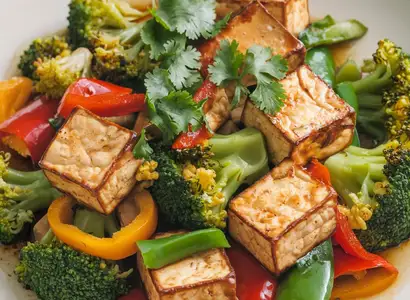
Day 3
The third day of this low sodium diet menu plan contains approximately 1520 mg of sodium, aligning well with a heart-healthy, low-sodium diet.
Breakfast:
- Scrambled Eggs with Mixed Vegetables: Scramble 2 eggs with bell peppers and spinach. (2 eggs, 1/2 cup bell peppers, 1/2 cup spinach)
- Melon: Serve 1 cup of fresh melon cubes. (1 cup melon)
- Low-Fat Milk: Enjoy 1 cup of low-fat milk. (1 cup low-fat milk)
Lunch:
- Lentil Soup: Make a homemade lentil soup with less than 400 mg of sodium. (1 cup lentils, vegetables, spices)
- Spinach Salad: Toss spinach with your favorite low-sodium veggies. (2 cups spinach, low-sodium veggies)
Dinner:
- Tofu Stir-Fry: Stir-fry 3 oz firm tofu with vegetables, using a low-sodium marinade. (3 oz tofu, mixed veggies, low-sodium marinade)
- Steamed Mixed Vegetables: Steam a cup of broccoli, carrots, and cauliflower. (1 cup mixed vegetables)
Snacks:
- Granola Bar: Choose a low-sodium option like a Fiber One or Kashi bar. (1 bar)
- Low Sodium Cottage Cheese: Enjoy a 1/4 cup of low-sodium cottage cheese. (1/4 cup cottage cheese)
- Hummus: Dip veggies in 1/4 cup of hummus. (1/4 cup hummus)
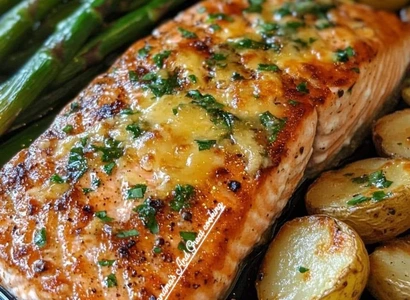
Day 4
The fourth day’s low sodium meals total roughly 1100 mg of sodium ensuring you enjoy a variety of flavors while managing your sodium intake effectively.
Breakfast:
- High Protein Wheat Cereal: Serve 1 bowl of high-protein wheat cereal with 1 cup of fat-free milk. Top with fresh strawberries and unsalted nuts. (1 bowl cereal, 1 cup fat-free milk, strawberries, 1 tbsp unsalted nuts)
Lunch:
- Turkey Sandwich: Make a sandwich with lean turkey breast, whole wheat bread, and a small amount of mustard or homemade low-sodium hummus. (3 oz lean turkey breast, 2 slices whole wheat bread, 1 tbsp mustard or low-sodium hummus)
- Mixed Vegetables: Steam or eat raw mixed vegetables. (1 cup mixed vegetables)
Dinner:
- Roasted Salmon with Sides: Roast 4 oz of salmon, and serve with scallion rice and cooked asparagus. (4 oz salmon, 1/2 cup scallion rice, 1 cup asparagus)
Snacks:
- Greek Yogurt: Have a small bowl of Greek yogurt with unsalted walnuts. (6 oz Greek yogurt, 1 tbsp unsalted walnuts)
- Baby Carrots: Enjoy 1 cup of baby carrots. (1 cup baby carrots)
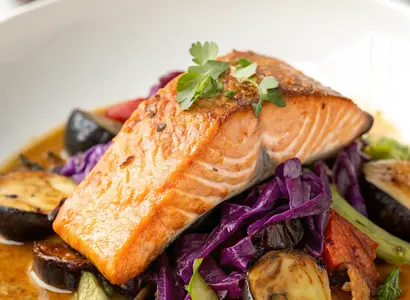
Day 5
The fifth day of this low sodium diet plan is designed to keep you nourished and satisfied with a total of approximately 910 mg of sodium.
Breakfast:
- Whole Grain English Muffin: Toast 1 muffin, spread with 1 tbsp unsalted peanut butter, and add sugar-free jelly. (1 muffin, 1 tbsp peanut butter, 1 tbsp sugar-free jelly)
- Medium Orange: Enjoy a medium orange. (1 orange)
Lunch:
- Salmon Fillet: Grill or bake a 3.5 oz salmon fillet, seasoned with herbs. (3.5 oz salmon fillet, herbs)
- Salad: Toss romaine lettuce, tomatoes, and black beans with a zero-sodium vinaigrette. (2 cups romaine lettuce, 1/2 cup tomatoes, 1/3 cup black beans)
Dinner:
- Vegetable Lentil Soup: Cook a hearty vegetable lentil soup with low-sodium vegetable broth, lentils, carrots, celery, and onions. (1 cup of homemade vegetable lentil soup)
- Steamed Vegetables: Steam 1 cup of broccoli and 1 cup of winter squash. (1 cup broccoli, 1 cup winter squash)
Snacks:
- Hard-Boiled Egg: Enjoy 1 large hard-boiled egg. (1 egg)
- Unsalted Almonds: Snack on 1/4 cup unsalted almonds. (1/4 cup unsalted almonds)
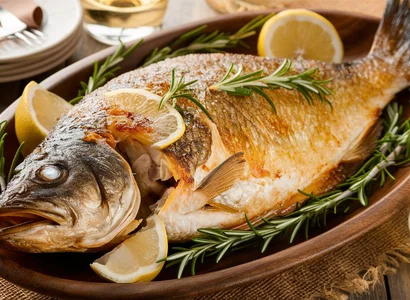
Day 6
The sixth day of this low sodium diet meal plan continues to support your low-sodium diet goals by providing varied low sodium meals containing a total of 1053 mg of sodium.
Breakfast:
- Yogurt Parfait: Layer 6 oz of fat-free yogurt with 1 oz of granola and fresh blueberries. (6 oz yogurt, 1 oz granola, 1 cup blueberries)
Lunch:
- Avocado and Veggie Wrap: Spread mashed avocado on a whole wheat wrap. Add shredded carrots, cucumber, tomato, and leafy greens. (1/4 avocado, 1 whole wheat wrap, veggies)
Dinner:
- Spicy Baked Fish & Lemon Rice: Bake 3 oz of fish and serve with 1/2 cup lemon rice and 1½ cups mixed steamed vegetables. (3 oz fish, 1/2 cup lemon rice, 1½ cups steamed veggies)
Snacks:
- Popcorn: End your day with 3 cups of air-popped popcorn with 1 tsp unsalted butter. (3 cups popcorn, 1 tsp unsalted butter)
- Granola Bar and Milk: A small granola bar, such as a Fiber One or Kashi bar (105 mg sodium), accompanied by 1 cup of low-fat milk (130 mg sodium).
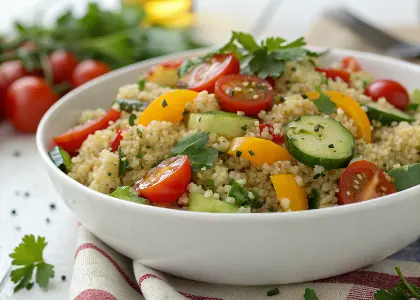
Day 7
The seventh day of this low sodium diet menu continues to support your low-sodium diet goals by providing varied meals containing a total of 1025 mg of sodium.
Breakfast:
- Egg and Veggie Scramble: Scramble 2 eggs with bell peppers, onions, and spinach. (2 eggs, 1/2 cup peppers, 1/2 cup onions, 1/2 cup spinach)
Lunch:
- Grilled Chicken Salad: Toss grilled chicken breast with mixed greens, cherry tomatoes, cucumber, red onion, and a light homemade vinaigrette. (3 oz grilled chicken, 2 cups mixed greens, 1/2 cup cherry tomatoes, 1/2 cucumber, 1/4 red onion, 1 tbsp olive oil, 1 tbsp lemon juice)
Dinner:
- Spring Vegetable Quinoa Salad: Combine cooked quinoa with spring vegetables like cucumber, bell peppers, peas, and fresh herbs. Toss with a light lemon vinaigrette for added flavor. (1/2 cup quinoa, 1/4 cup cucumber, 1/4 cup bell peppers, 2 tbsp peas, fresh herbs, 1 tsp lemon juice)
Snacks:
- Rice Cakes: Snack on 2 plain rice cakes topped with almond butter or hummus. (2 rice cakes, 1 tbsp almond butter or hummus)
- Greek Yogurt: Enjoy 1/2 cup plain Greek yogurt with fresh berries. (1/2 cup Greek yogurt, 1/4 cup berries)
Low Sodium Foods
When crafting a 7 day low-sodium diet meal plan, the emphasis is on fresh, unprocessed foods that are naturally low in sodium.
Here is a comprehensive list of low sodium foods:
1. Fresh Fruits and Vegetables
Fresh fruits and vegetables are staples in a low-sodium diet as they are naturally low in sodium and full of essential nutrients.
Here are some of the fruits and vegetables to include in a low sodium meal plan:
- Apples
- Berries
- Oranges
- Mangoes
- Bananas
- Broccoli
- Sweet potatoes
- Beets
- Okra
- Spinach
- Peppers
- Carrots
- Edamame
- Brussel sprouts (Cook thoroughly)
2. Whole Grains
Whole grains are a healthier alternative to refined grains and are very low in sodium. They provide necessary fiber, which helps in digestion and overall health.
Here are the whole grains to include in a low sodium diet meal plan:
- Brown or wild rice
- Quinoa
- Barley
- Whole-wheat pasta
- Couscous
3. Lean Proteins
Protein is crucial for muscle repair and growth but choose your proteins wisely to keep sodium intake low.
Here are some of the lean proteins to consider incorporating in your 7 day low sodium diet meal plan:
- Skinless poultry such as chicken or turkey
- Lean cuts of beef such as sirloin or tenderloin
- Pork tenderloin
- Fish and seafood such as salmon, trout, tuna, shellfish, and shrimp
- Tofu and other soy products
- Eggs and egg whites
- Low-sodium or unsalted nuts and seeds
- Legumes such as lentils, black beans, and chickpeas
- Tofu
- Eggs
- Legumes like beans and lentils
4. Low-Fat Dairy and Alternatives
Dairy products can be high in sodium, but choosing the right types can ensure you get your calcium without the salt.
Here are some of the low-fat diary and alternatives to consider during preparing a 7 day low-sodium diet meal plan:
- Unsweetened almond milk (check for unsweetened and low sodium varieties)
- Plain, unsweetened yogurt (look for low sodium options)
- Unsalted butter or ghee
- Unsalted cottage cheese
- Low sodium or unsalted cheese such as mozzarella, ricotta, or feta
- Unsalted sour cream
- Homemade nut or seed milk with no added salt
5. Nuts, Seeds, and Legumes
Unsalted nuts and seeds are great for snacking or adding crunch to meals without adding sodium.
Consider incorporating these nuts, seeds, and legumes in your low sodium diet meal plan:
- Unsalted almonds, cashews, pistachios, and peanuts
- Sunflower seeds
- Dried peas
- Pumpkin seeds
- Chia seeds, flaxseeds, and hempseeds
- Unsalted nut butter (e.g., almond butter, peanut butter)
- Dried beans such as chickpeas, black beans, and lentils
- Unsalted hummus
6. Low-sodium packaged options
When looking for low-sodium packaged options for condiments and seasonings, it’s crucial to carefully select products that are specifically labeled as “low sodium” or “no salt added.”
Here are some examples of low-sodium packaged condiments and seasonings that can be included in a low sodium diet meal plan:
- Mrs. Taste Zero Sodium Barbecue Sauce – A low-sodium barbecue sauce option that provides flavor without the excess sodium content.
- Heinz No Salt Added Tomato Ketchup – A low-sodium alternative to regular ketchup, offering the familiar taste with reduced sodium.
- Mrs. Taste Zero Sodium Mayonnaise – A low-sodium mayonnaise option for use in various recipes and dishes.
- Robbie’s Worcestershire Sauce – A low-sodium Worcestershire sauce that can add depth of flavor to dishes without excessive sodium.
- Mrs. Taste Zero Sodium Italian Salad Dressing – A low-sodium salad dressing option that allows for flavor enhancement without the high sodium content.
- Mrs. Taste Zero Sodium Mustard – A low-sodium mustard option for adding tangy flavor to meals without the added sodium.
- Mrs. Taste Less Sodium Shoyu Soy Sauce – A reduced-sodium soy sauce option for seasoning and marinating.
- Dash Garlic Herb Salt Free Marinade and Dash Lime Garlic Salt Free Marinade – Both are salt-free marinade options for adding flavor to meats and vegetables.
- Robbie’s Hickory Barbeque Sauce and Robbie’s Original Barbeque Sauce – Low-sodium barbecue sauce choices for enhancing the flavor of grilled dishes.
- Ginger People Sweet Ginger Chili Sauce and Robbie’s Hawaiian Sweet & Sour Sauce – Low-sodium sauces that can be used to add unique flavors to various dishes.
7. Condiments and Seasonings
Flavor your foods with low-sodium versions of your favorite condiments and plenty of herbs and spices.
You can consider using these condiments when planning your 7 day low-sodium diet meal plan:
- Italian seasoning blend
- Taco seasoning (choose low-sodium options)
- Curry powder (check for low-sodium blends)
- Herbes de Provence
- Cajun seasoning (choose low-sodium varieties)
- Extra virgin olive oil
- Avocado oil
- Canola oil
- Sesame oil (use sparingly due to high flavor intensity)
- Coconut oil (use sparingly due to high saturated fat content)
- Low-sodium soy sauce or tamari
- Low-sodium Worcestershire sauce
- Hot sauce (check for low-sodium varieties)
- Salsa (choose low-sodium options)
- Tomato paste (unsalted)
- Unsweetened ketchup (low-sodium)
Foods to avoid in a Low Sodium Diet
When aiming for a low sodium diet, it’s crucial to be aware of the foods that are typically high in sodium. These foods can sabotage your efforts to control your sodium intake.
Here’s a comprehensive list of foods high in sodium:
1. Processed and Packaged Foods
- Smoked, cured, salted or canned meats and fish: These include items like bacon, sausages, hot dogs, and smoked salmon.
- Frozen breaded meats and dinners: Commonly found items include frozen chicken nuggets and breaded fish fillets.
- Canned entrees: Such as spaghetti and meatballs, ravioli, and beef stew.
- Salted nuts and beans with salt added: These snacks can significantly increase your sodium intake unexpectedly.
2. High-Sodium Dairy Products
- Buttermilk: Often used in pancakes and dressings, buttermilk is higher in sodium than other milk products.
- Regular and processed cheeses: Including American cheese, cheese spreads, and cheese sauces.
- Cottage cheese: Despite its reputation as a healthy snack, it can be high in sodium.
3. Breads, Grains, and Cereals
- Bread and rolls with salted tops: These include bagels and pretzels that often come with a generous topping of salt.
- Quick breads, self-rising flour, and mixes: Such as those used for biscuits, pancakes, and waffles.
- Prepackaged mixes for potatoes, rice, pasta, and stuffing: These convenient options often contain hidden sodium to enhance flavor.
4. Vegetables and Fruits
- Regular canned vegetables and juices: Always opt for fresh or frozen varieties without added salts.
- Pickled vegetables: Such as olives, pickles, and sauerkraut.
- Packaged vegetable mixes: Like scalloped potatoes and frozen hash browns.
5. Soups and Broths
- Canned and dehydrated soups: These can be extremely high in sodium.
- Broth and bouillon cubes: Often used as a base for cooking and soups.
- Cup of noodles and seasoned ramen mixes: A quick meal option that is usually loaded with sodium.
6. Fats, Desserts, and Sweets
- Soy sauce and seasoning salts: Including garlic salt, onion salt, and monosodium glutamate (MSG).
- Bottled dressings and sauces: Such as salad dressings, ketchup, mustard, and barbecue sauce.
- Salted butter and margarine: Opt for unsalted versions to control your sodium intake better.
- Instant desserts: Like puddings and cake mixes that often contain added salts for flavor enhancement.
7. Fast Food and Restaurant Meals
- Burgers, fries, and pizza: These are typically high in sodium due to their cooking process and ingredients.
- Deli meats and sandwiches: Often made with high-sodium bread and processed meats.
8. Certain Snacks
- Chips, pretzels, and salted crackers: These are popular snacks that are usually high in sodium.
- Popcorn: Opt for air-popped popcorn without added butter or salt.
Benefits of a Low Sodium Diet
Adopting a low sodium diet is not just about cutting back on salt; it’s about embracing a lifestyle that enhances overall health.
Here are some compelling benefits of following a low sodium diet:
1. Managing Blood Pressure
- A significant advantage of reducing sodium intake is the management and reduction of blood pressure. Studies consistently show that low sodium foods can lower blood pressure levels, particularly beneficial for individuals with hypertension.
2. Reduced Risk of Cardiovascular Diseases
- A low sodium diet is associated with a decreased risk of cardiovascular diseases such as heart attack, heart failure, and stroke.
- Excessive sodium intake can contribute to the hardening and narrowing of the arteries, increasing the strain on the heart and potentially leading to adverse cardiovascular events.
3. Better Kidney Function
- Sodium directly impacts kidney function by influencing how the body handles water. A low sodium diet helps alleviate the workload on the kidneys, which is especially crucial for those with kidney health concerns.
4. Enhanced Bone Health
- Excessive sodium consumption can lead to calcium losses, which in turn can weaken bones over time. A low sodium diet helps preserve bone density and reduce the risk of fractures.
5. Lowered Water Retention
- Excessive sodium intake can lead to water retention, causing bloating and puffiness. By reducing sodium consumption, individuals can alleviate water retention, leading to a reduction in these uncomfortable symptoms.
6. Weight Management
- Adopting a low sodium diet can aid in weight management efforts. Excessive sodium intake can contribute to water retention and bloating, leading to temporary weight gain.
Low Sodium Diet Tips
Embarking on a low sodium diet involves more than just avoiding the salt shaker. Here are some straightforward low sodium diet tips:
- Maintain Daily Sodium Intake: For most adults, aiming for a daily sodium intake of around 2,000 mg is beneficial, but those with heart or kidney conditions should consider reducing this to 1,500 mg.
- Utilize Low Sodium Meal Services: Consider using low sodium meal delivery services such as Sunbasket, BistroMD, and Mom‘s Meals. This can simplify your dietary changes by providing meals that are already balanced for sodium content, allowing you to enjoy healthy low sodium meals.
- Flavoring Smartly: Instead of salt, try enhancing your dishes with a variety of herbs and spices. Rinse canned foods to reduce sodium content before cooking or eating.
- Be Aware of Hidden Sodium: Certain foods like flavored yogurts, granola bars, and salad dressings can contain unexpectedly high levels of sodium. Opt for products labeled “low sodium” or “no added salt” whenever possible.
- Read Labels: Make it a habit to read nutrition labels for sodium content, especially when purchasing packaged foods. This practice helps you make informed choices and keeps your sodium intake in check.
- Cook at Home: Prepare meals at home to better control your sodium intake. When dining out, don’t hesitate to request dishes with no added salt and choose dressings or sauces on the side to minimize unexpected sodium consumption.
- Start Slowly: If you’re new to a low sodium diet, gradually reduce your salt intake. This allows your taste buds to adjust without diminishing your enjoyment of food.
- Keep Hydrated: Drinking plenty of water helps flush out excess sodium from your body. Staying hydrated is crucial, especially when adjusting to a lower sodium intake.
- Plan Each Meal: All low sodium meals should contain less than 600 mg of sodium. This approach helps distribute sodium intake evenly throughout the day, avoiding peaks that can strain the body.
Conclusion
A 7 day low-sodium diet meal plans not only contribute to lowering blood pressure and improved heart health but opens the door to a new understanding and appreciation of food in its most natural state.
By following a well-planned 7 day low sodium meal plan, individuals can effectively reduce their sodium intake while still enjoying a diverse range of delicious and satisfying meals.
Focusing on whole low sodium foods such as fruits, vegetables, lean proteins, and whole grains forms the foundation of a low sodium diet, providing essential nutrients while naturally limiting sodium content.
Using herbs, spices, and low sodium condiments can add depth and flavor to dishes without relying on high sodium seasonings or sauces.
Remember checking labels for sodium content and opting for low sodium meals or sodium-free versions of packaged foods and condiments is crucial when planning a low sodium diet meal plan.
- What foods to avoid if alkaline phosphatase is high
- How to lower triglycerides naturally
- What foods to avoid with trulicity
- 7-day meal plan for low potassium diet
- Easy endometriosis diet plan
- 3000 calorie meal plan
- 7-day meal plan for pregnant women
- 7-day meal plan for kidney disease
- 7-day elimination diet meal plan
- Foods to avoid on Contrave
- Anti inflammatory meal plan
- 21-day Fix eating plan
- 7-day anemia diet menu
- Mediterranean DASH Diet plan
- Type 2 diabetes diet meal plan
